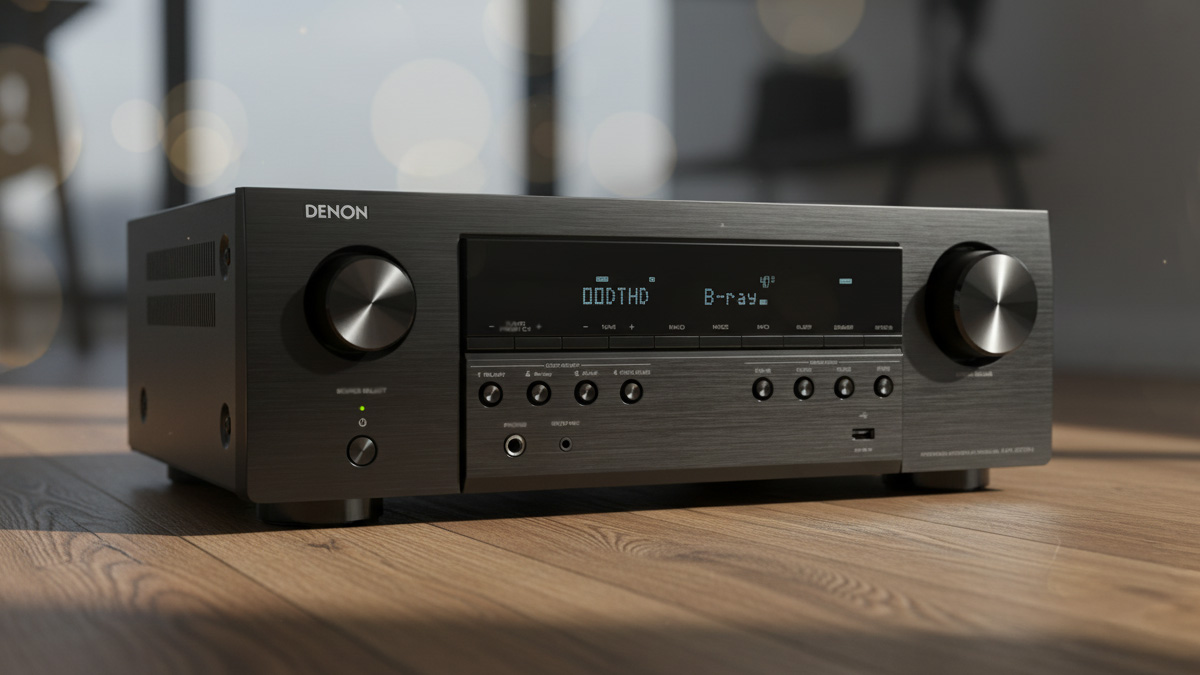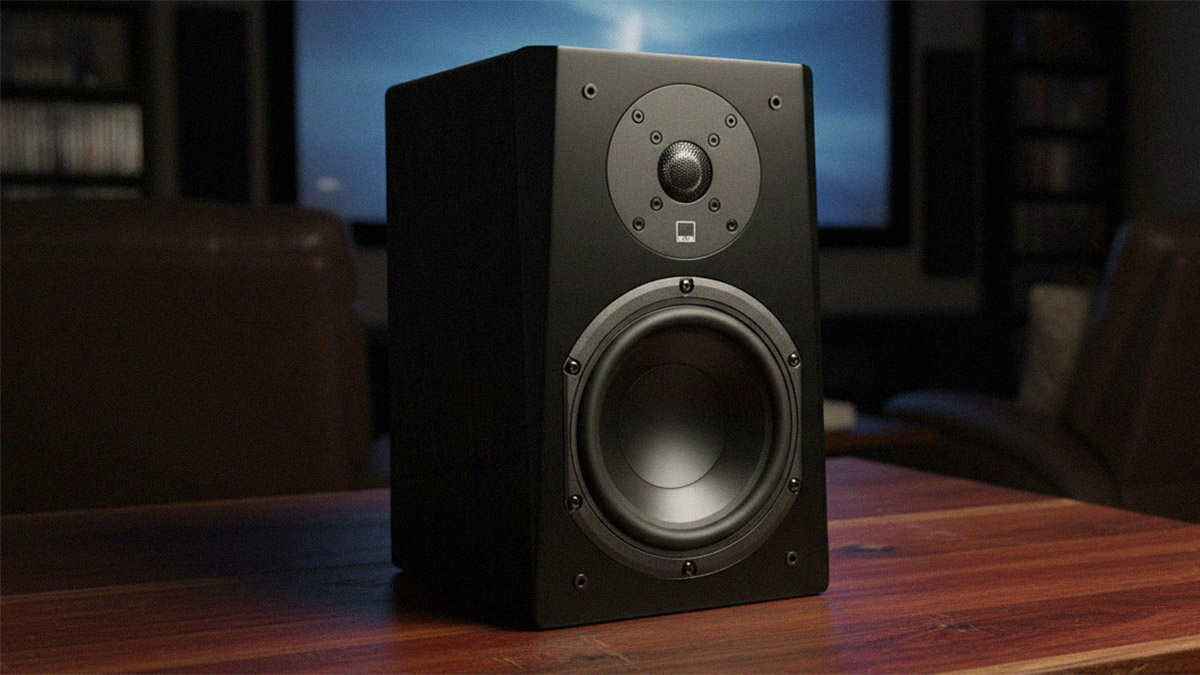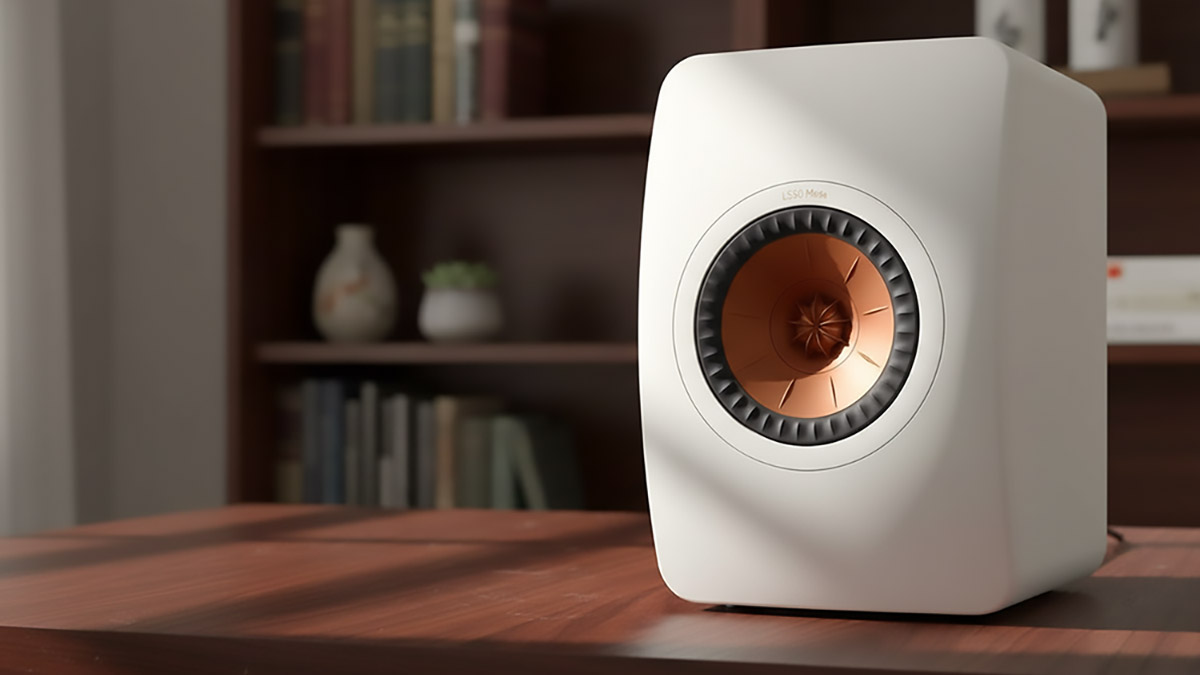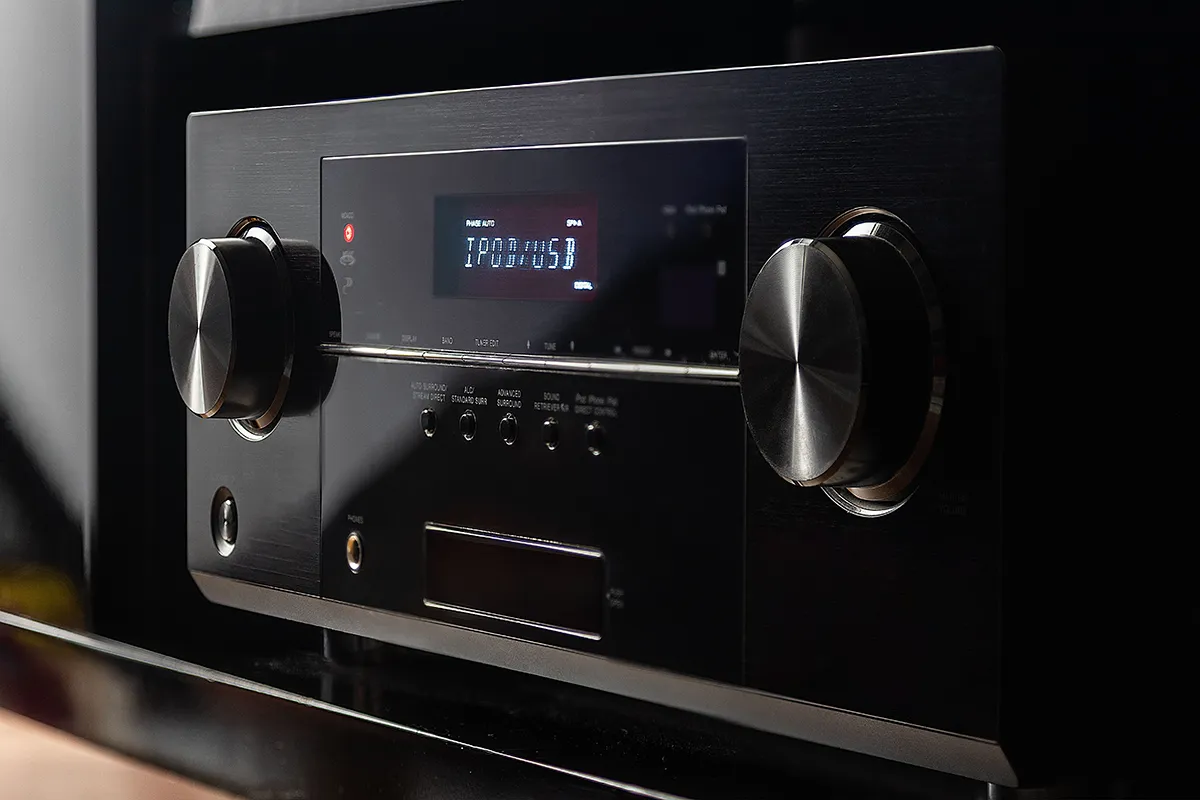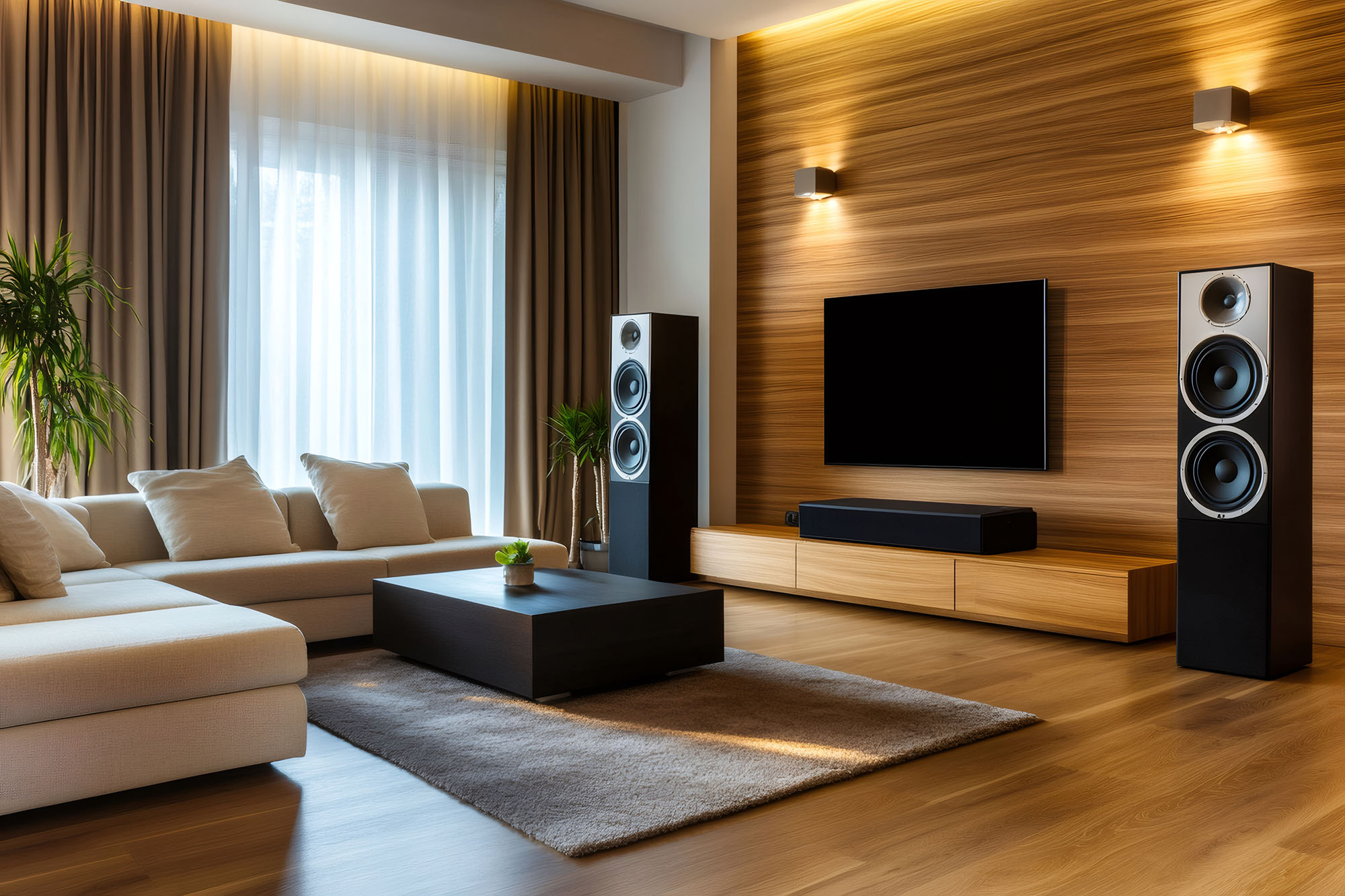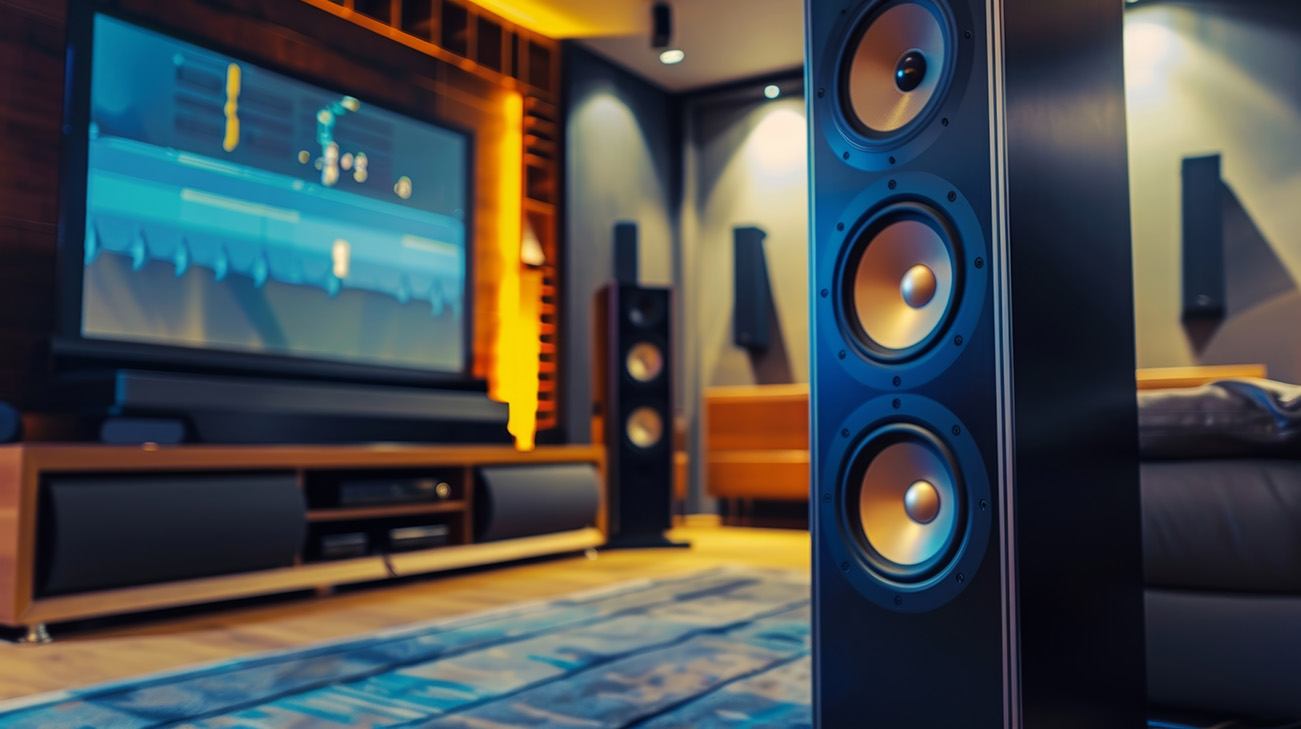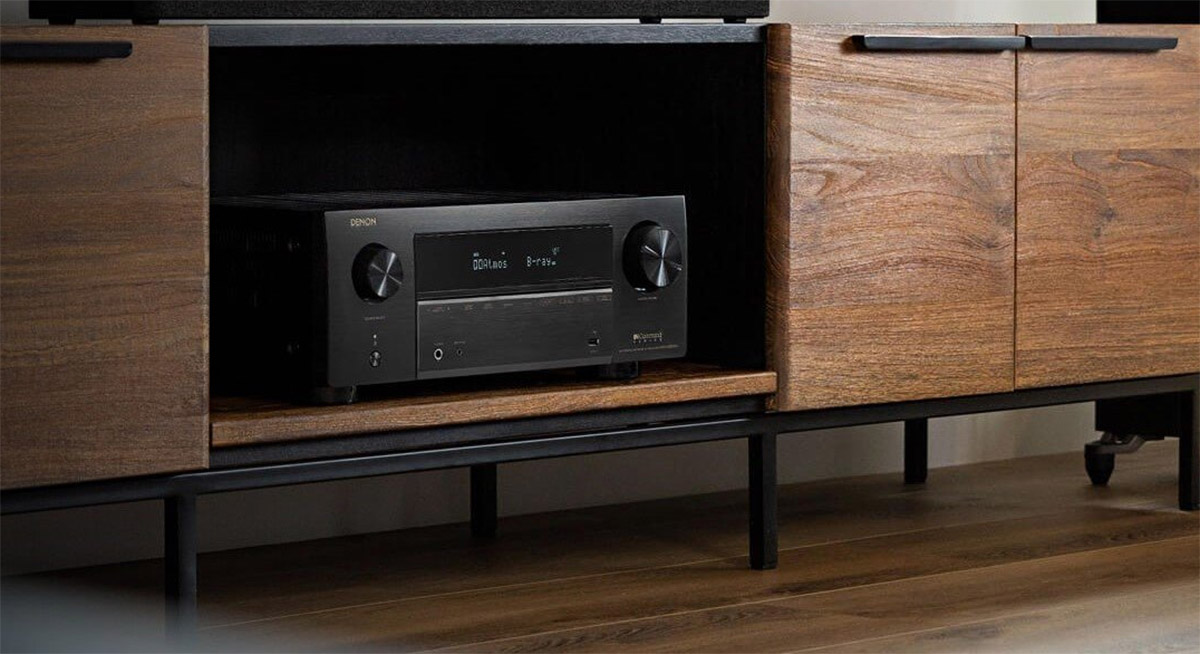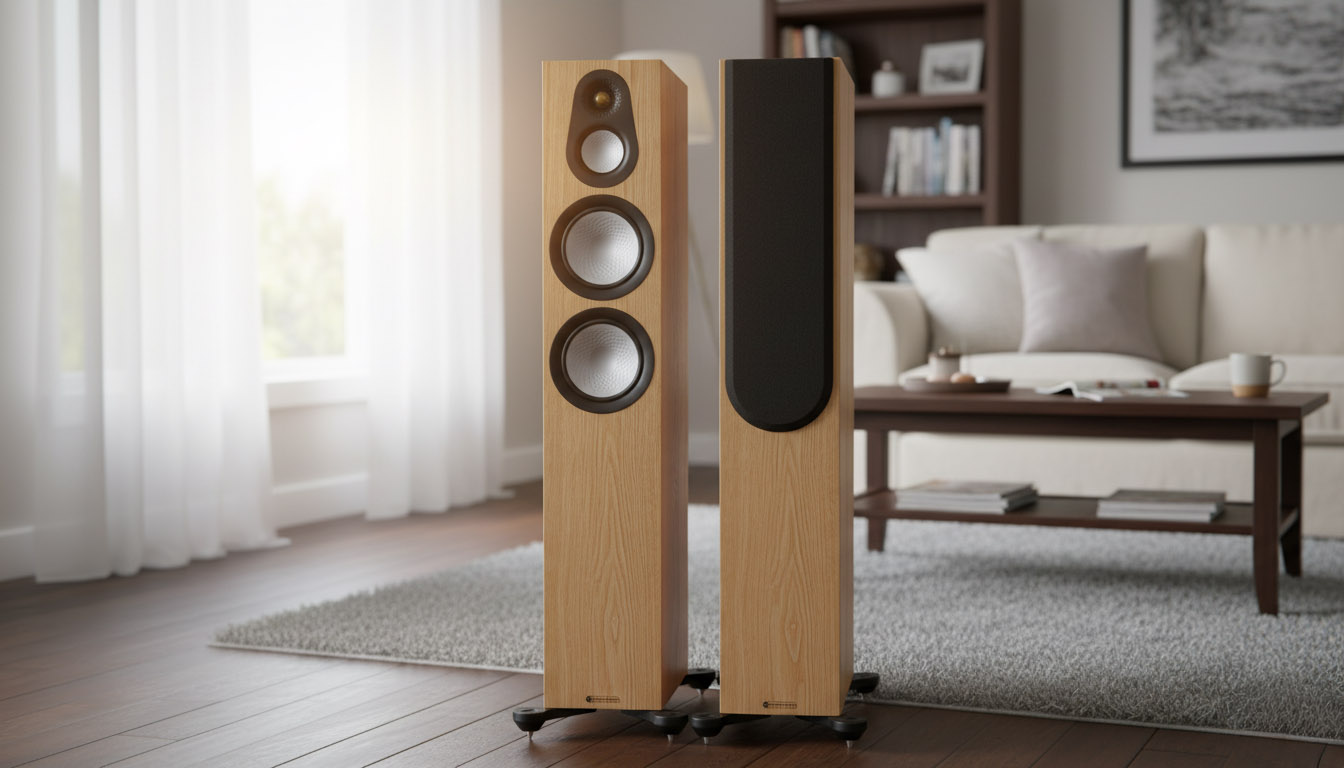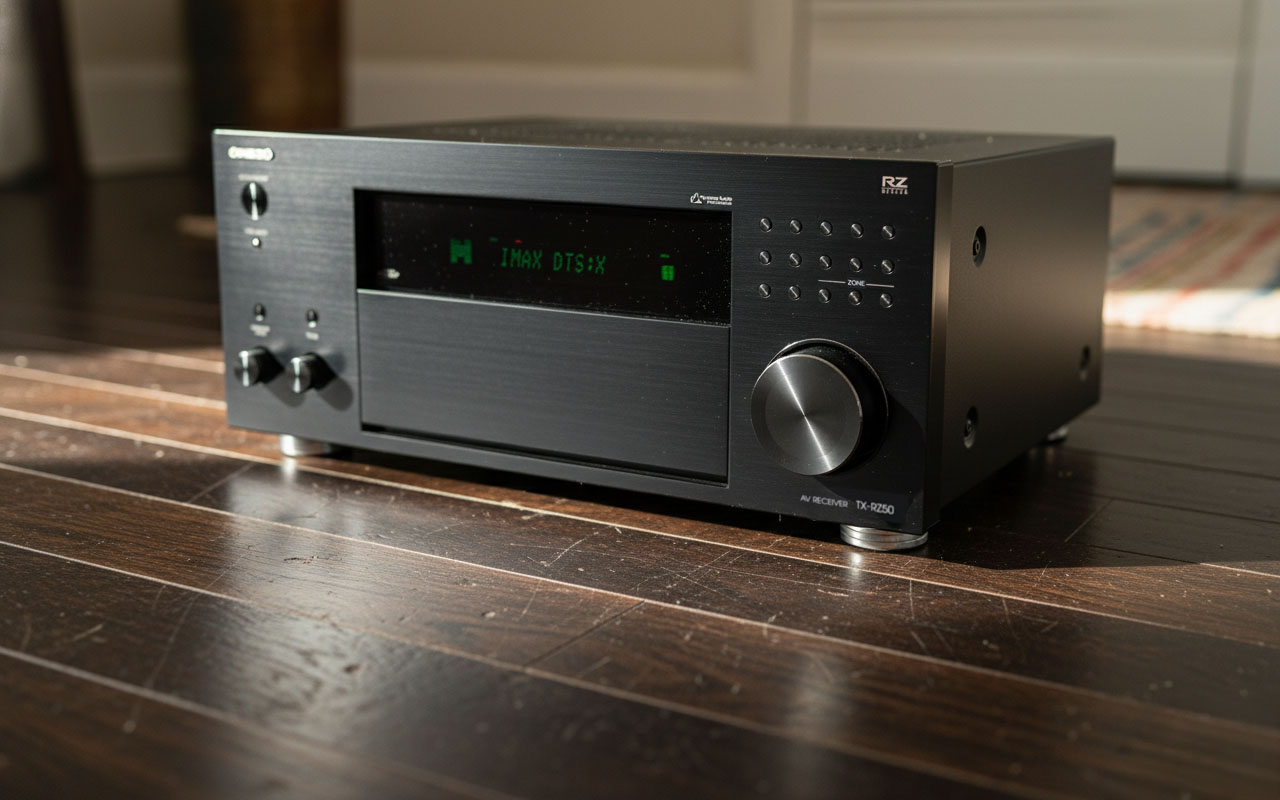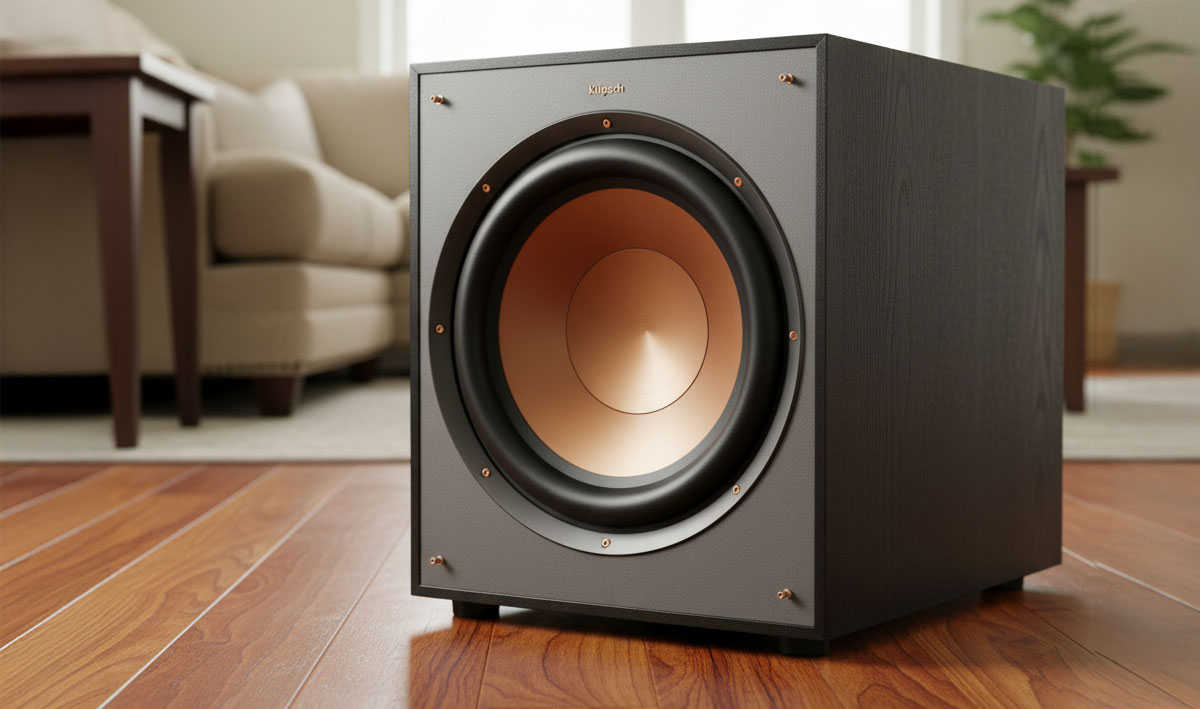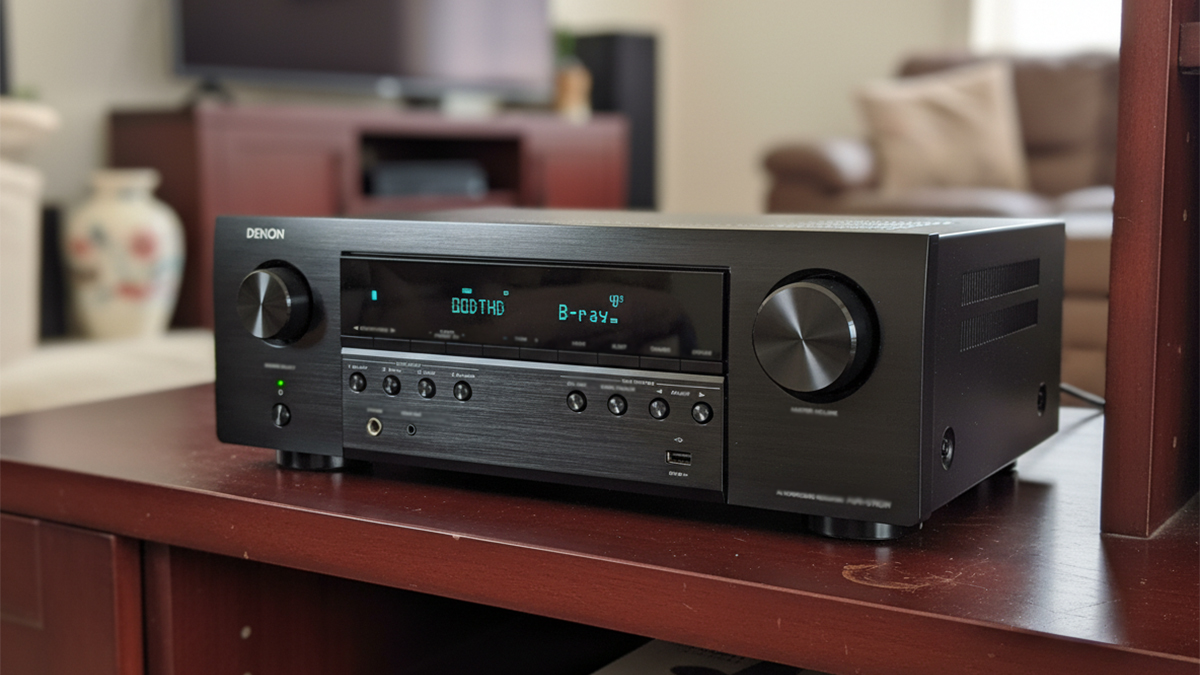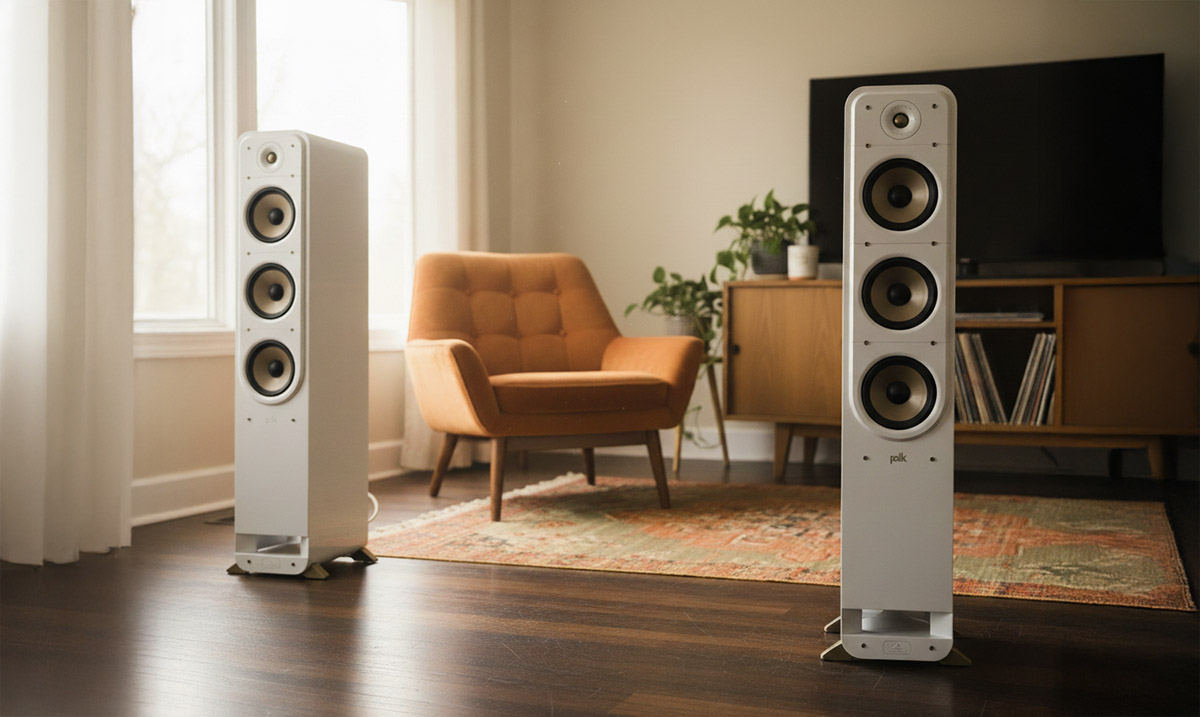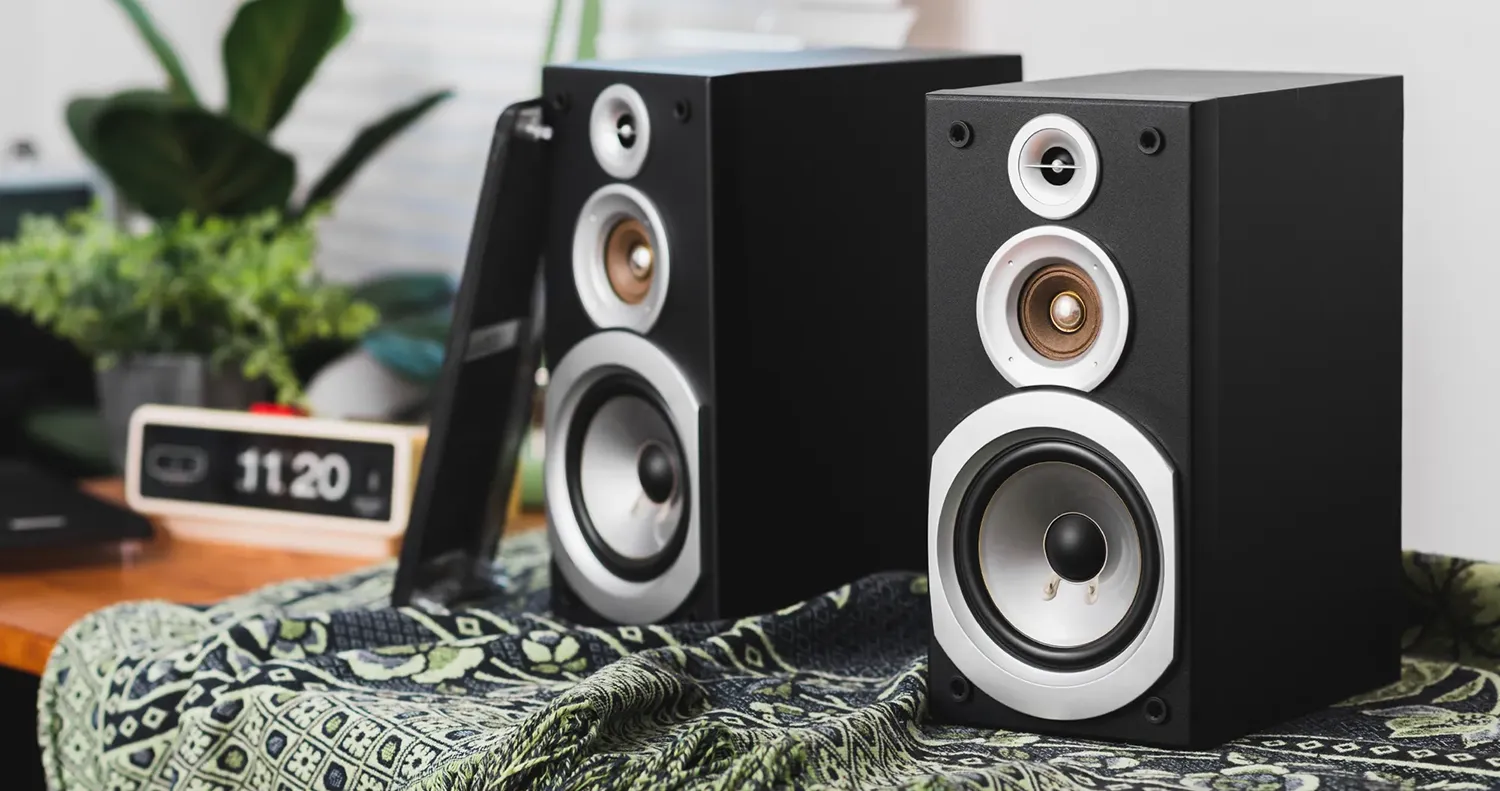Quick Take
The Denon AVR-S670H is a solid way to step into real surround sound without overcomplicating your living room. Owners highlight clean dialogue, an easy setup routine that gets you close on the first try, and day-to-day reliability that makes movie night simple. Music playback has a relaxed, slightly warm tone, and once you set crossover and levels, bass blends well with compact subs. It won’t power the most demanding speakers in a cavernous room, and the interface is plain, yet for small and medium spaces the S670H quickly fades into the background and just lets your shows, games, and playlists shine.
Pros
![]() Dialogue sounds clear and anchored to the screen even at low volume
Dialogue sounds clear and anchored to the screen even at low volume
![]() Natural, slightly warm tone that flatters streaming, TV, and casual music
Natural, slightly warm tone that flatters streaming, TV, and casual music
![]() Audyssey setup with the included mic dials in balance fast for first-timers
Audyssey setup with the included mic dials in balance fast for first-timers
![]() Smooth surround bubble after calibration; pans feel cohesive around the couch
Smooth surround bubble after calibration; pans feel cohesive around the couch
![]() Bass integrates cleanly with small subs once levels and crossover are set
Bass integrates cleanly with small subs once levels and crossover are set
![]() Quiet at idle—no hum or hiss—so late-night listening feels calm
Quiet at idle—no hum or hiss—so late-night listening feels calm
![]() Day-to-day use is stable; once inputs are labeled it just works
Day-to-day use is stable; once inputs are labeled it just works
Cons
![]() Limited headroom with inefficient speakers or very large rooms
Limited headroom with inefficient speakers or very large rooms
![]() Menus are plain and a bit slow, so tweaks can feel clunky
Menus are plain and a bit slow, so tweaks can feel clunky
![]() Out-of-the-box bass can be boomy without careful sub placement
Out-of-the-box bass can be boomy without careful sub placement
![]() Dynamic EQ won’t suit every taste; some prefer it off for music
Dynamic EQ won’t suit every taste; some prefer it off for music
![]() Bluetooth pairing can be finicky compared with app-based streaming
Bluetooth pairing can be finicky compared with app-based streaming
Introduction
If you’re building your first home theater or replacing a tired five-channel receiver, the Denon AVR-S670H aims to be the “just right” option. It’s a 5.2-channel model focused on real-world living rooms: clean amplification, useful room correction, and modern HDMI that plays nicely with today’s TVs and consoles. What separates it from older gear is how easily it slips into daily life. The on-screen assistant, the included microphone routine, and sensible defaults get you from cardboard to couch quickly. After that, it’s the little quality-of-life touches—clear dialogue at sane volume, a calm noise floor at night, and smooth surround pans—that make it feel like an upgrade every time you press play.
Key Features (and why they matter)
5.2 channels with thoughtful bass management
Most living rooms benefit more from good bass control than from extra speaker count. With dual sub outputs, you can place two compact subs in different spots to smooth low frequencies across a sofa. Even one well-placed sub pairs cleanly once you set crossover and gain, making effects weighty without muddying voices.
Audyssey MultEQ with Dynamic EQ and Dynamic Volume
The included microphone measures your speakers and seating positions, then sets distances, levels, and EQ. For beginners this is a stress saver; for veterans it’s a fast baseline. Dynamic EQ maintains clarity at lower volumes and Dynamic Volume tames sudden peaks for night watching. If you prefer a purist approach for music, you can toggle these off and keep the room correction.
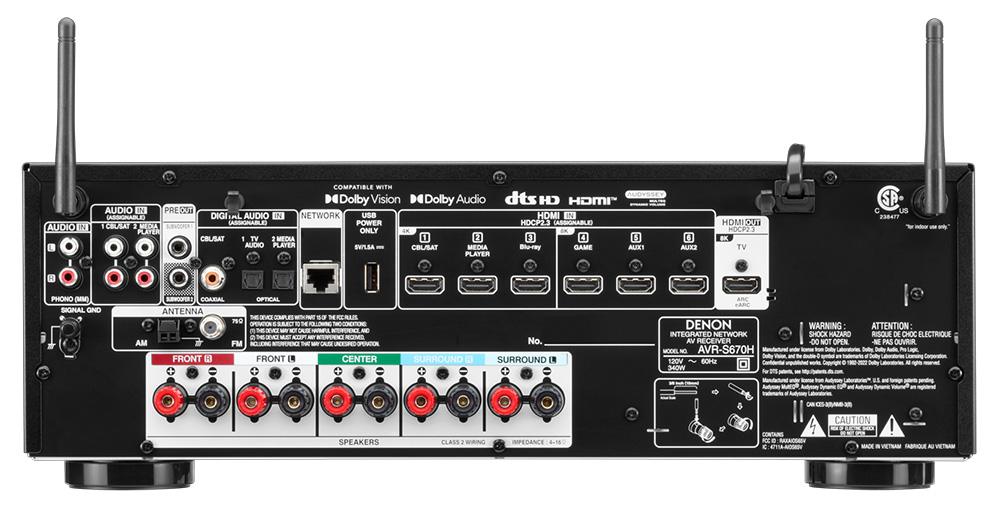
Modern HDMI with eARC for one-remote nights
One HDMI cable back to the TV carries both picture and sound. Turn on the TV and your receiver wakes, volume follows the TV remote, and built-in apps send high-quality audio to your speakers. Input switching becomes a non-event, which means everyone in the house actually uses the system.
Gaming-friendly video support
The Denon S670H supports 8K/60 and 4K/120 on three of its six HDMI inputs and includes VRR and ALLM. That combination keeps fast motion clean and responsive on current consoles while keeping the setup plug-and-play.
Streaming that fits daily routines
Whether you cue playlists from a phone or cast from a tablet, the S670H covers casual listening cleanly. HEOS, AirPlay 2, Wi-Fi, and Bluetooth handle most scenarios, and you can group with Denon Home speakers if you want music in more rooms.
Phono input for vinyl
A built-in moving-magnet phono stage lets most turntables plug in directly—no extra box required—so spinning records is as easy as selecting the phono input.
Quiet, composed amplification
Rated at 75 watts per channel (2 channels driven, 8 ohms), the S670H sounds composed with typical bookshelf or slim tower speakers at normal distances. More important than the number is the calm noise floor; it avoids hiss at idle and keeps dialogue steady when the mix gets busy.
Sound Quality and Setup
Most buyers talk first about dialogue. News anchors, podcasts, and streaming dramas sit firmly in the center, and you don’t have to ride the volume to keep words understandable when a scene gets loud. That stability continues as you pan around a room in an action sequence; effects glide between speakers rather than jump or smear. The surround “bubble” feels cohesive once Audyssey has set levels and delays, which is particularly helpful in living rooms where seats are off-center or against a wall.
On music, the receiver leans easygoing rather than hyper-etched. Acoustic guitars have body, cymbals stay clean, and the midrange feels relaxed for long sessions. Listeners coming from soundbars or older entry receivers often call out how the Denon S670H separates instruments at low and medium volume. If you love a super-forward treble, you may prefer turning off Dynamic EQ for two-channel listening. Conversely, if your room absorbs high frequencies, leaving it on can restore a bit of sparkle and low-level balance.
Bass integration is where setup pays off. Out of the box, placing a sub in a corner can sound heavy. Small moves—pulling the sub along the front wall, adjusting the crossover to 80 Hz as a starting point, and trimming sub level by a decibel or two—tighten the low end quickly. Dual subs smooth things further if your room layout allows. Once dialed in, explosions have texture rather than just thump, and kick drums land with definition without stepping on dialogue.
Day-to-day behavior is steady. Input switching is quick once you’ve labeled sources, and eARC means TV apps just work. The receiver stays quiet at idle, which matters more than you think on late nights. A few owners mention that digging into menus can feel a bit slow or plain, but those are occasional chores—after your first week, you’ll rarely be in there.
How it compares by ear to similar options
Shoppers who cross-shop five-channel models tend to land on a few differences. Against bare-bones receivers, the S670H’s auto-calibration usually produces a more even soundstage at the main seat, so pans feel believable and dialogue stays put. Compared to higher-channel models, you give up immersive formats, yet in small and medium rooms a well-set 5.1 with a compact sub often sounds cleaner and more coherent than a cramped 5.1.2. If your speakers are low-sensitivity or your room is very large, a step-up model with more power or extra channels can offer headroom; otherwise, the S670H hits the sweet spot for clarity and control at everyday volumes.
If you want a similarly calm sound with slick app control, Yamaha RX-V4A is a solid alternative. MusicCast makes multiroom simple and YPAO is easy to run; by contrast, the Denon’s Audyssey tends to pull a slightly tighter “bubble” around the couch and its triple next-gen HDMI inputs are the safer pick for 4K/120 gaming.
For a no-frills, plug-and-play option, Sony STR-DH590 keeps things ultra simple. It’s great if you just want 5.1 with basic auto setup and don’t care about network streaming. Sonically it’s clean, but the Denon’s room correction and eARC support make day-to-day TV app use and bass integration feel more polished.
If you’re flirting with expansion, Denon AVR-S770H adds two channels and support for height layouts while keeping a similar sonic character. Prefer the simplest path but want Pioneer’s flavor? Pioneer VSX-534 offers straightforward 5.2 with MCACC auto setup; it’s easy to live with, though the S670H typically wins on dialogue lock-in after calibration.
Who Is It For?
Choose the Denon AVR-S670H if you want a living-room receiver that favors real-world usability over checkbox features. It’s a strong match for apartments, townhomes, and small to mid-size family rooms where seats sit 8 to 12 feet from the TV and efficient bookshelf or slim towers do the heavy lifting. If you plan to add height speakers soon, or you run big, power-hungry towers in a large, open space, consider a 7-channel model with more punch. For everyone else, this is an easy, confidence-building upgrade.
Tips for Better Results
Place the left and right speakers so the tweeters sit near ear height and start with a mild toe-in. Run the mic routine with the room quiet and spread measurements across your actual seating. Begin with an 80 Hz crossover for all speakers, then adjust by ear. If music feels thick, try Dynamic EQ off; if it feels thin at night, turn it on. For sub placement, slide the cabinet a foot at a time along the front wall and re-run measurements; small moves often deliver big improvements. Label inputs clearly and save your favorite combinations to quick-select buttons so anyone can switch from game night to movie night in one press.
Alternatives to Consider
- Denon AVR-S570BT – A simpler path if you want basic five-channel surround and casual Bluetooth listening without network streaming.
RELATED: Denon AVR-S570BT Review
- Denon AVR-S770H – Adds two extra channels and support for immersive layouts if you plan to install height speakers later.
- Yamaha RX-V4A – A comparable five-channel choice with a clean interface and basic room auto-setup, favored by listeners who prioritize straightforward app control.
Final Thoughts
The Denon AVR-S670H focuses on the things you notice every day: clear voices, believable surround movement, and a setup flow that doesn’t punish first-timers. It’s quiet when you need it to be, friendly with modern TVs, and flexible enough to make both movies and music feel more alive at comfortable volumes. While the menus are no beauty pageant and it won’t power the most demanding speakers in a giant room, those trade-offs keep the experience simple and dependable. If you want five-channel surround that “just works” and sounds better than your living room has any right to, the S670H belongs at the top of your shortlist.
FAQ
Does it support immersive formats like Dolby Atmos?
No. It’s designed for traditional 5.1 or 5.2 setups using Dolby TrueHD and DTS-HD Master Audio.
Is setup beginner-friendly?
Yes. The on-screen assistant and included mic measure the room and set levels and distances so you’re close on the first pass.
Will it drive my speakers?
With typical 8-ohm bookshelf or slim towers in small to medium rooms, yes. For low-sensitivity speakers in large rooms, consider a step up.
What if bass sounds boomy at first?
Move the sub a foot at a time along the front wall, start at an 80 Hz crossover, trim the sub level slightly, and re-run measurements. Those tweaks usually fix it.
Is it good for late-night listening?
Yes. Dynamic Volume reins in big jumps, Dynamic EQ keeps clarity at low levels, and the receiver stays quiet at idle.
How does it handle music?
It leans natural and relaxed. For two-channel listening, many owners prefer stereo mode with room correction on, and Dynamic EQ off or on to taste.
Can I grow the system later?
You can add a second sub for smoother bass, upgrade speakers, or move to a 7-channel model down the road if you want height speakers.
Any common complaints?
Some users find the menus plain and a bit slow, and a few report Bluetooth pairing can be pickier than app-based streaming.
Will my TV apps work through it?
Yes. With eARC enabled, the TV sends app audio back to the receiver over the same HDMI cable, so one remote can handle volume.
What’s the best listening starting point?
Run the mic routine, set all speakers to Small at 80 Hz, label inputs, and save a “Night” preset with Dynamic Volume on and a slightly lower sub level.
Teksignal.com participates in the Amazon Services LLC Associates Program, an affiliate advertising program designed to provide a means for sites to earn advertising fees by advertising and linking to Amazon.com

